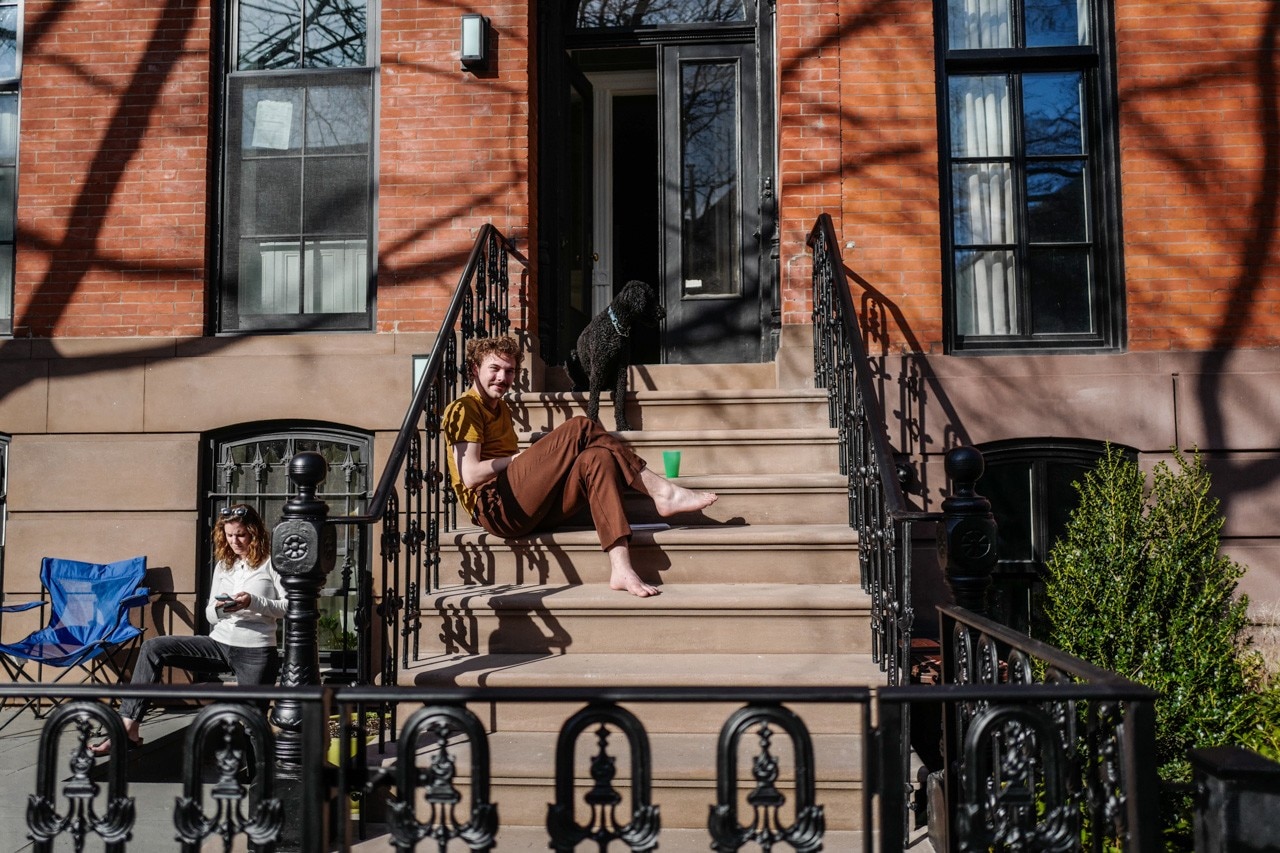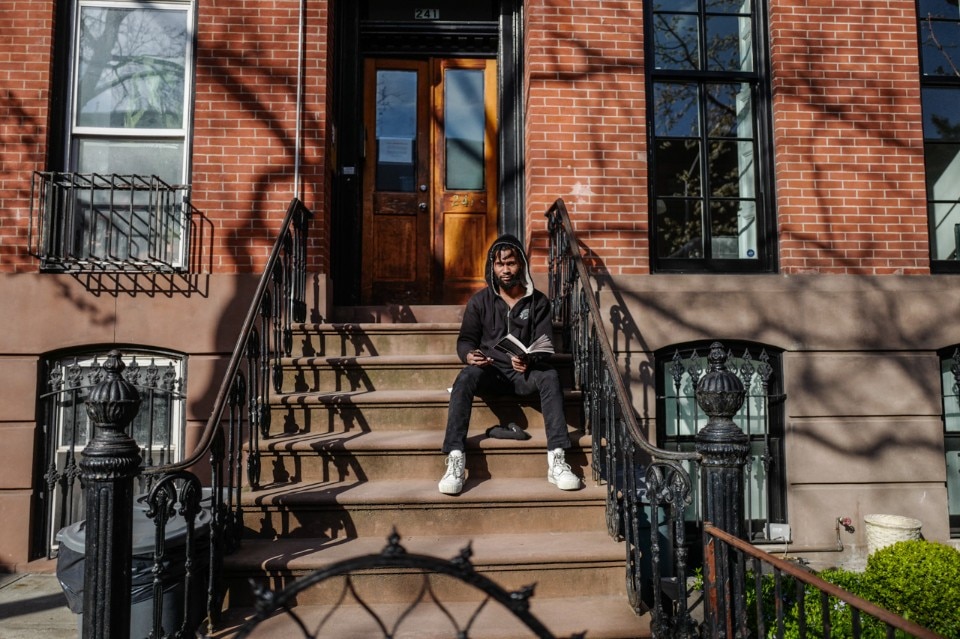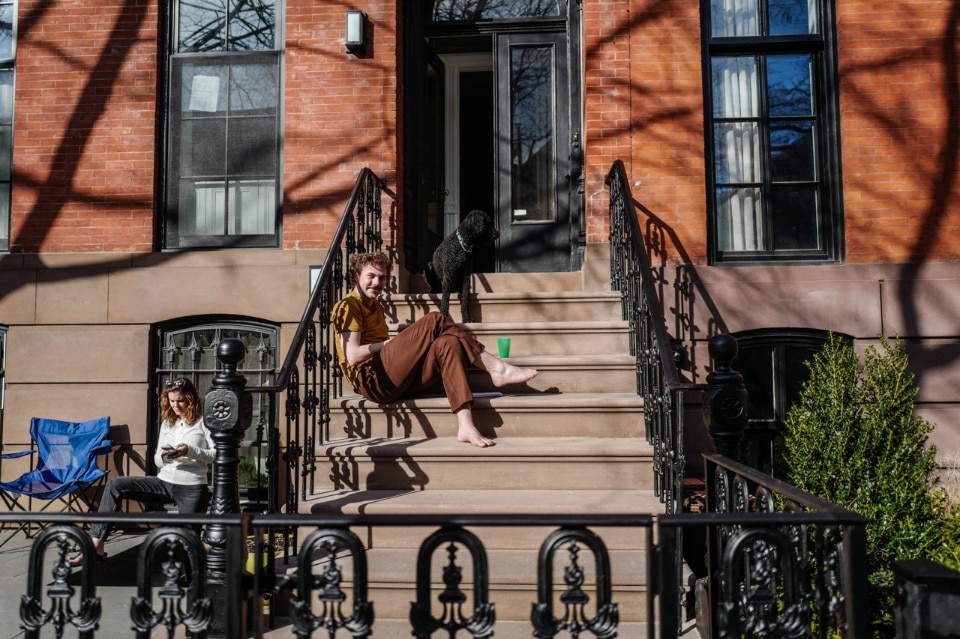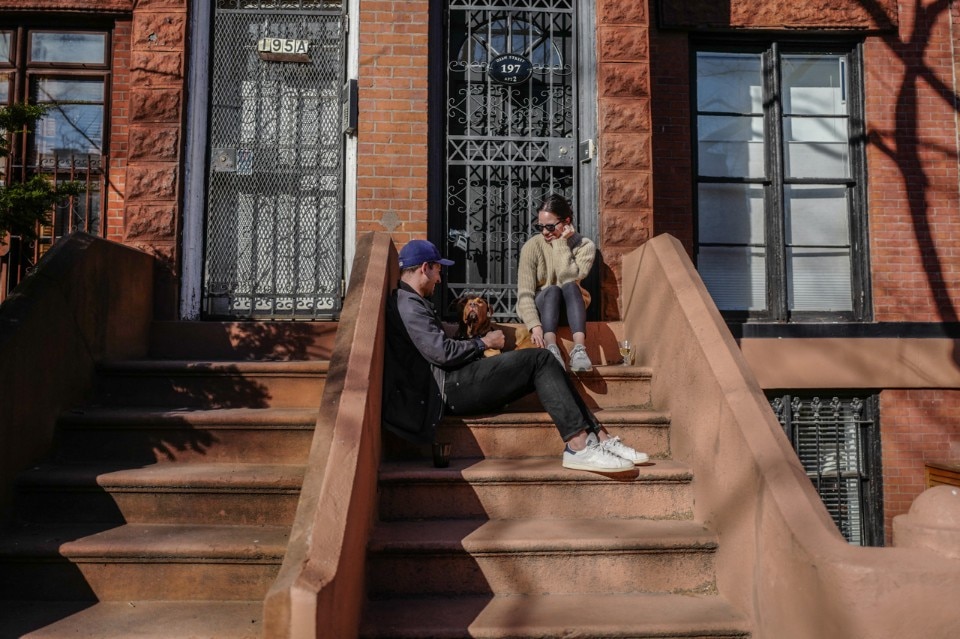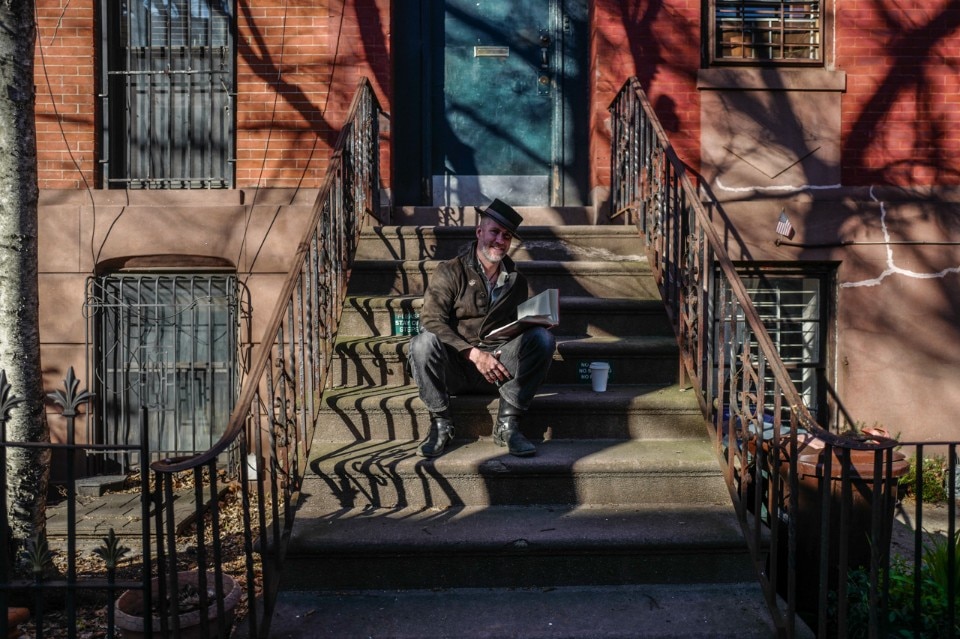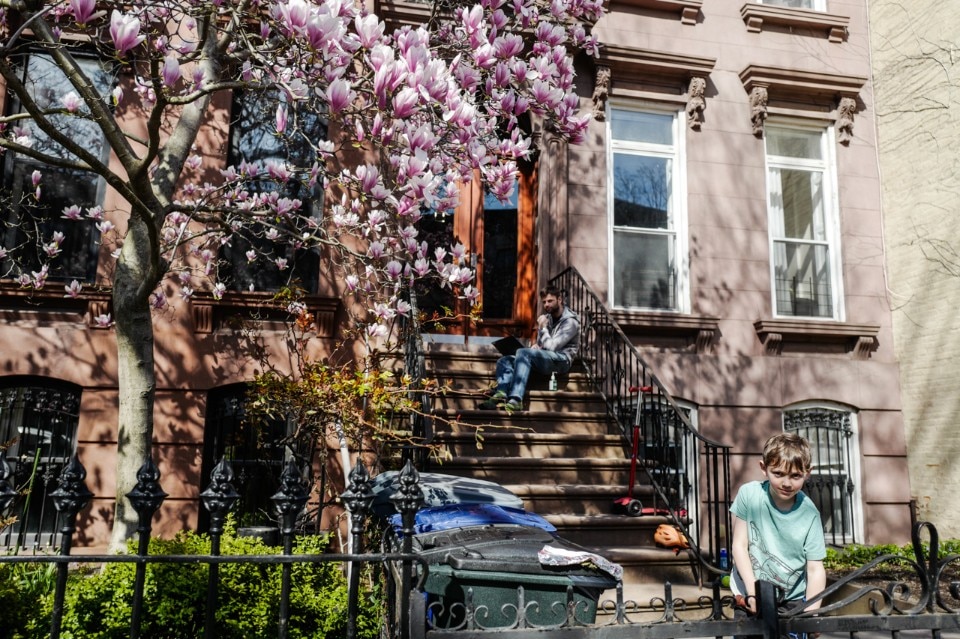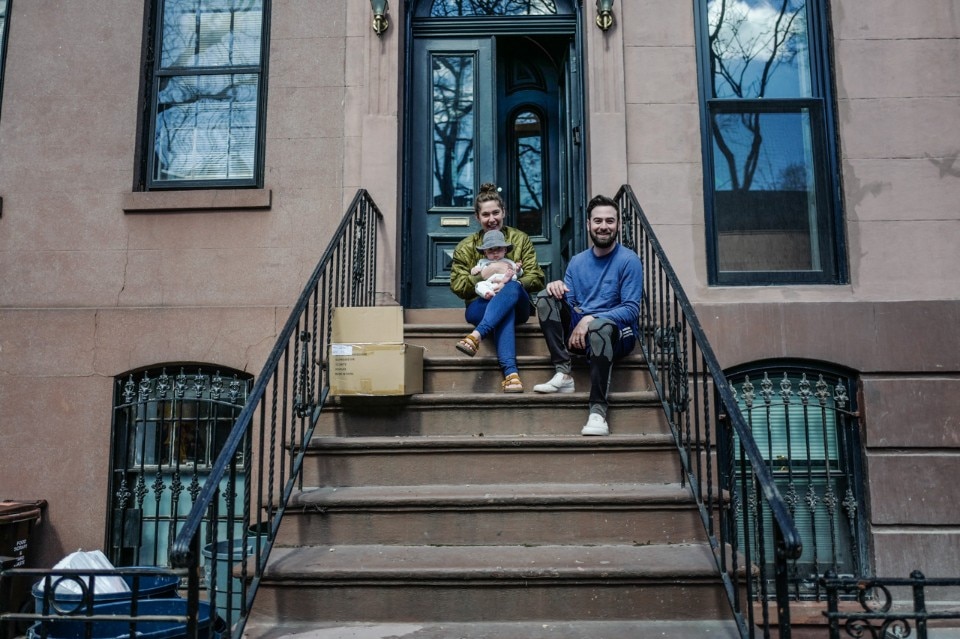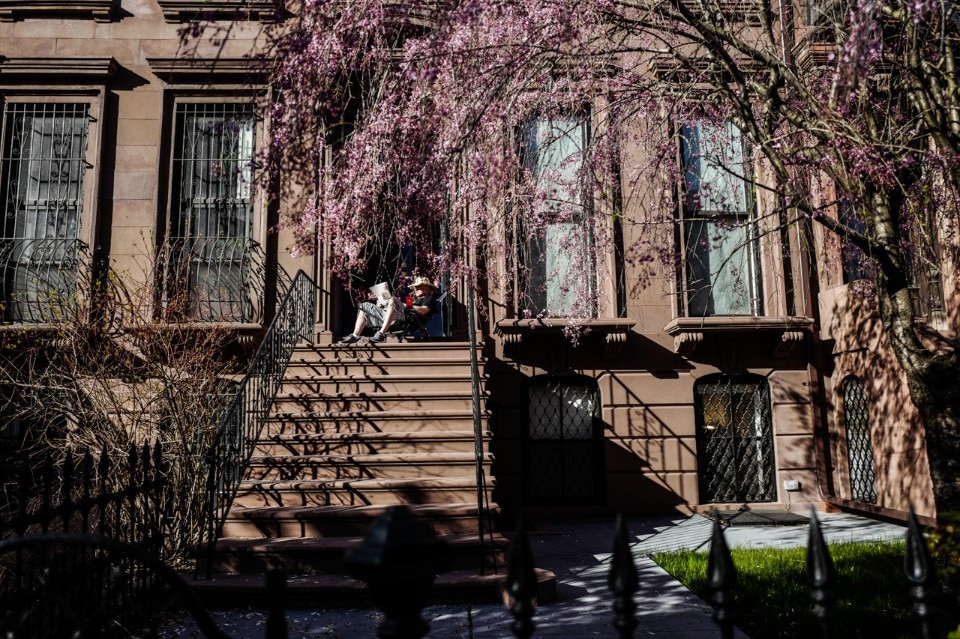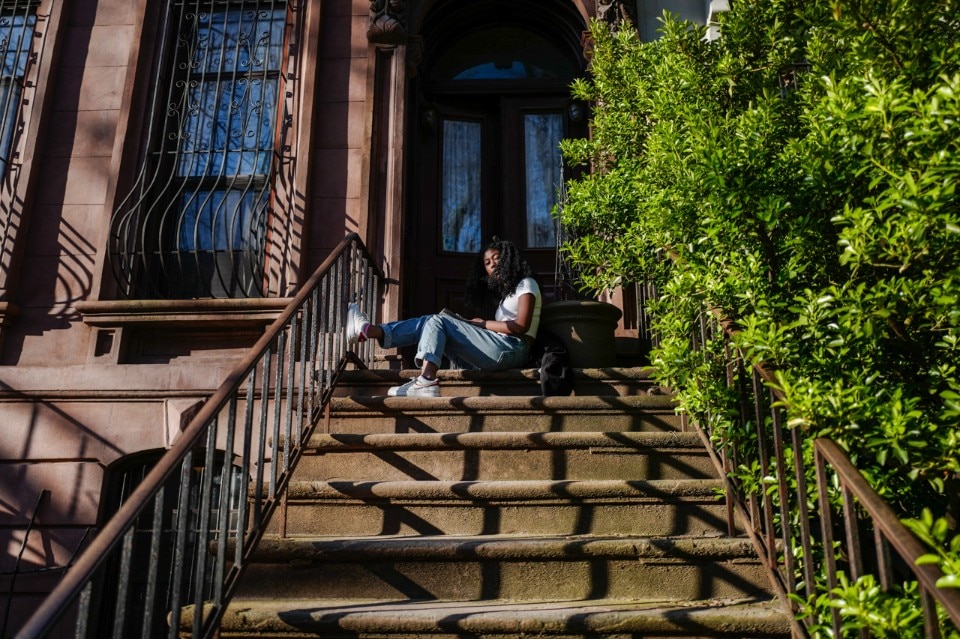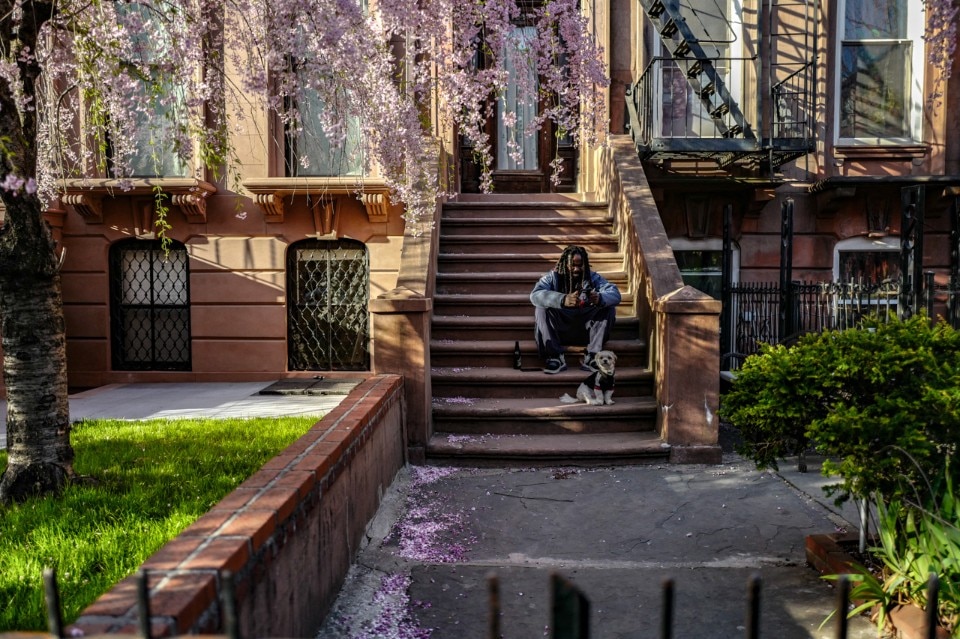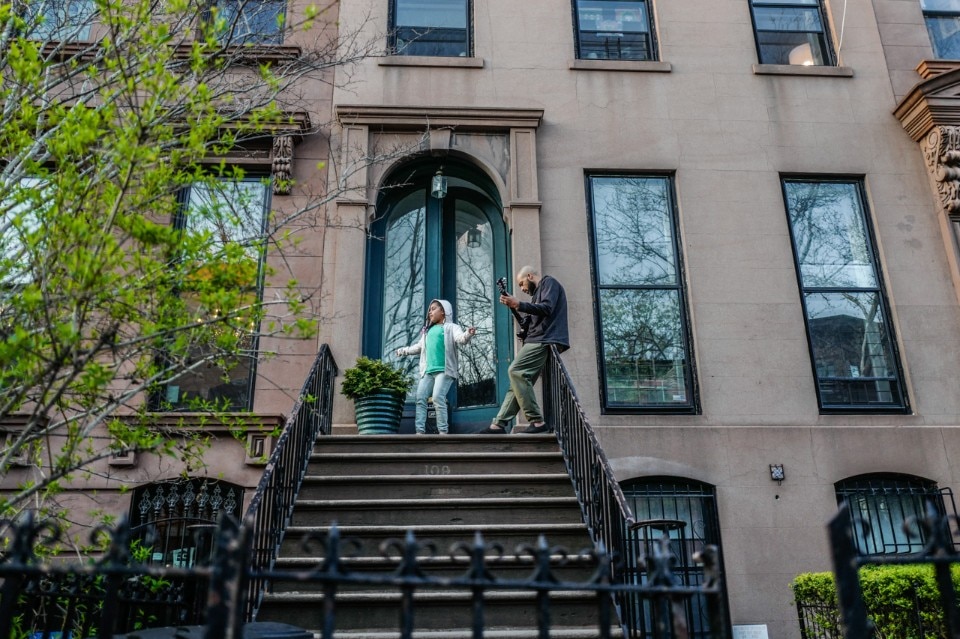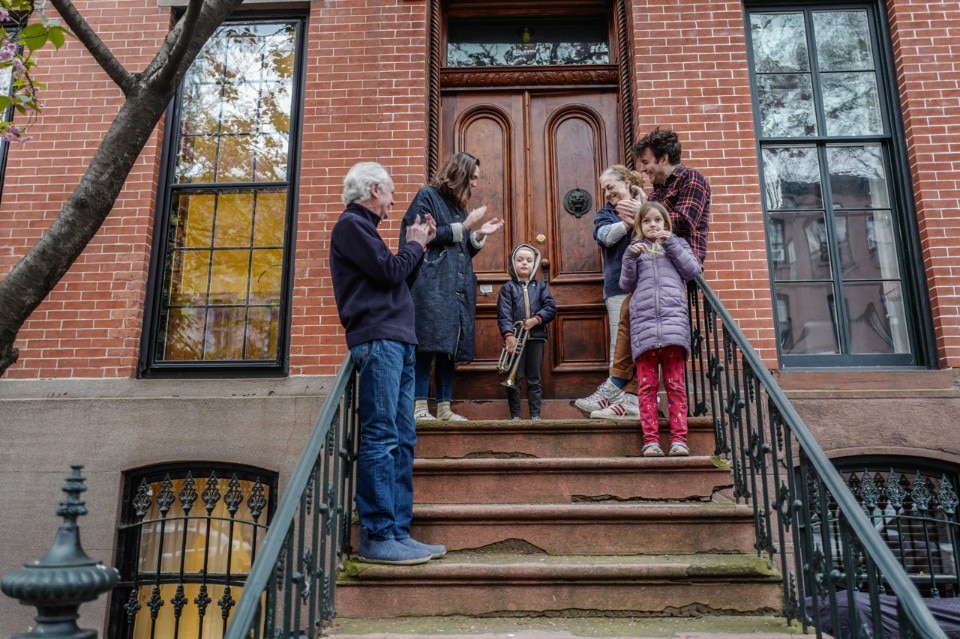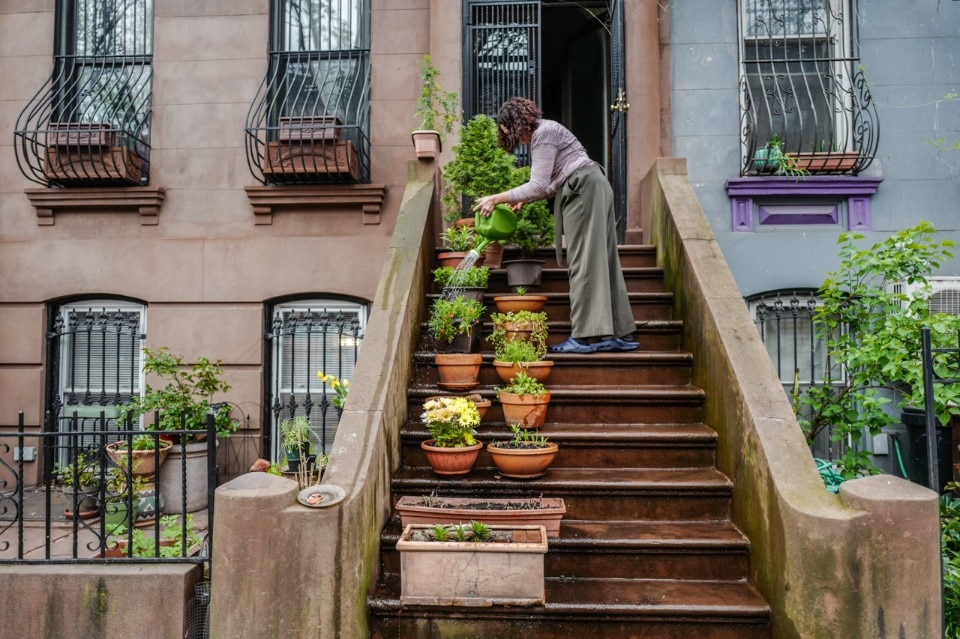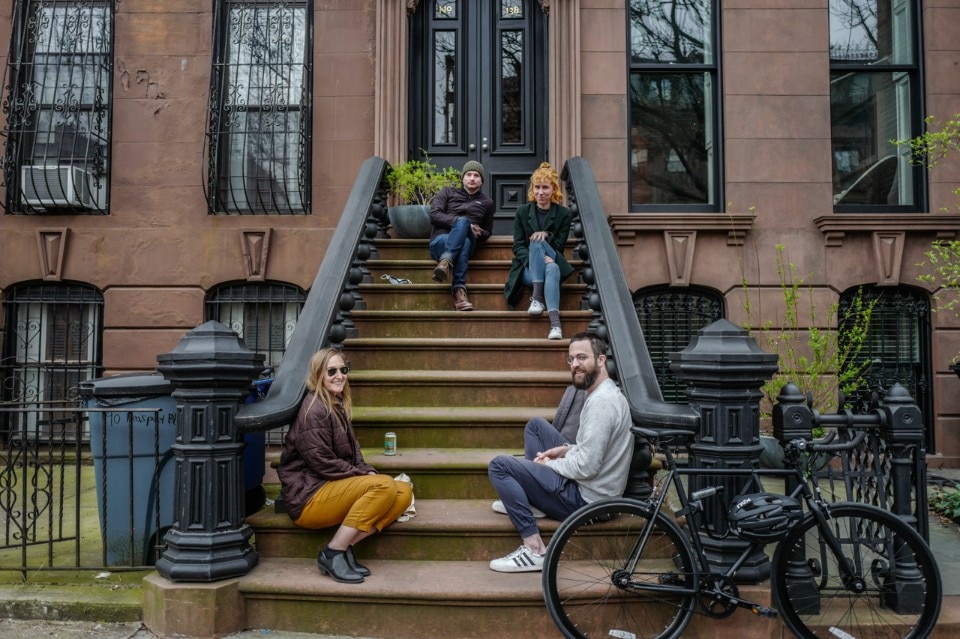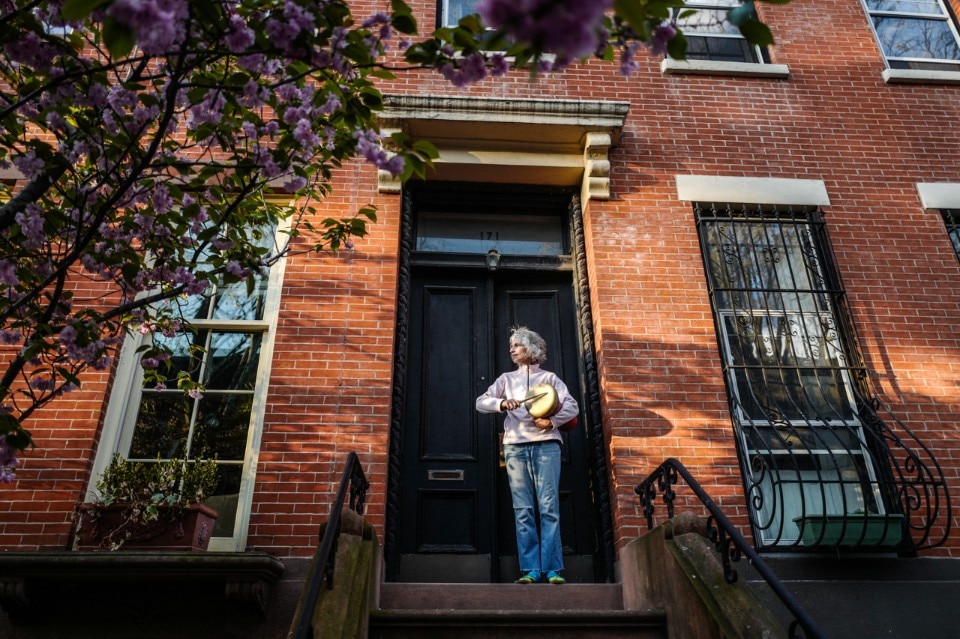How are street–photographers doing these days, at the time of coronavirus? How much do restrictions, from social distancing to quarantine, affect the work of those who have made the street their studio? And how should they reinvent their approach, or reimagine their vision, in order to avoid large vedutas of empty cities, on one side, or home–made intimate diaries, on the other?
Padova born but long–time New York based Francesca Magnani keeps on straight on her ways, photographing the varied humanity she encounters during her endless crossings of the five boroughs, but for her latest series temporarily sets aside metros and ferries and focuses on one of the city’s most distinctive features: the stoops.
You’ve caught a glimpse of them in some of the most classical movies set in New York, particularly in Brooklyn, from the pre–gentrification version in Spike Lee’s Crooklyn (set in the 1970’s black bastion of Bed–Stuy) to the middle class one in Noah Baumbach’s The Squid and the Whale (set in the still almost white 1980’s Prospect Park). And if they briefly appear in the (whether lower or upper) Manhattan of Woody Allen or Wes Anderson (whose 111 Archer Avenue is at 144th Street and Convent Avenue in Harlem, actually), and in Carrie Bradshaw’s or Holly Golightly’s ones, they served as the perfect location for a certain photographic imagery, from Helen Levitt’s or Jill Freedman’s Bronx to Bruce Davidson’s or Art Kene’s Harlem.
Imported by the usual Dutch — who back in their country used them against the floods — to New Amsterdam without changing their name (from stoep), the doorsteps soon become an irreplaceable architectonic component of the classic Brownstone building spread all over Brooklyn, where they found a new but as much practical use: that of spacing the first floor from the street level, usually covered with horse manure.
A way more unprejudiced conceptual placement wants them to be a “social spacer”, in its less contemporary meaning: since New York had no alleys, a shifted up entrance door allowed the building to have a basement one, by which the servants could access the building without undermining the respectable “façade” of the family they served.
It’s through the stoops, after all, that according to Jane Jacobs’ seminal The Death and Life of Great American Cities local communities could be keeping a watchful eye on their neighborhood and exercising a sort of self–government to face (or to control, one could opine) the petty crime’s illicit activities. And it’s again by a stoop that children gathered to play, precisely, stoop ball, and it’s on a stoop that a couple used to kiss goodnight after a date.
Besides being a synecdoche for the Brownstones, that over time have turned out to be a successful financial investment for the ones who owned (or bet on) them, nowadays the stoop is a physical expression of certain New Yorker intellectualism, embodied by such writers as Jonathan Lethem: raised in Dean Street, and known as The Bard of Brooklyn (until his “California treason” at least), with his Motherless Brooklyn and, above all, The Fortress of Solitude (mostly set in Boerum Hill and Gowanus) he managed to raise his neighborhood architecture’s most peculiar aspects in a state of mind, where colorful autobiography and creative speculation meet at last.
And this is the very spot where Francesca Magnani found the starting point for her research: «The project On The Stoop was originally called #deandays, from Dean Street, where I live temporarily,» she explains, «and it started this autumn exactly on the stoops, that the locals use as a “display”. A few days after, Governor Cuomo asked New York State to stay “on pause”, but New Yorkers seemed to have already interiorized the suggestion».
Forced to focus on the hyperlocal of BoCoCa (portmanteau «that I deplore and that I have never used») by the anti–coronavirus restrictions, Magnani soon understood how stoops, a perfect place to see and be seen, and (so) to socialize, are not only an open–air set to portray quintessentially New Yorkers, but also a junction between public and private, where history is once again storing itself.
Even without flash mobs, stoops are just like Italian balconies: in such difficult times this is the right place where, by sunbathing or just getting some fresh air, by sipping a coffee or just having a little chat, we can testify our presence and, within the limits imposed by the present situation, our own resilience.


